Imagine growing up in a world with no guarantees, with nothing to your name, and where fundamental human rights are not “fundamental.” This is the reality for many in the Democratic Republic of the Congo (DRC). The DRC is one of the five poorest nations in the world. In 2022, over 60 percent of the population lived on approximately two dollars a day.1 In the 2020 Human Capital Index, the DRC ranked 164 out of 174 countries, and its score of 0.37 was below the average for the group of least-developed countries and for the Sub-Saharan African region.2 Therefore, people are forced to do whatever they can to survive, and for many that means working in the cobalt mines. Oftentimes, the primary reason Congolese will work in the mines simply boils down to generational and structural poverty. This desperation to survive forces them to accept work under very dangerous conditions with numerous hazards. This is the case for fourteen-year-old Eddie who worked in the Kolwezi mines, nine-year old Kabedi who worked in cobalt mines until she turned twelve, and adult miner Pierre, who was injured on the job and continued working in hazardous conditions even after recovering from his accident.3 Nonetheless, the DRC mining industry has steadily increased the nation’s economic growth, from 6.20 percent in 2021 to 8.60 percent in 2022.4 The DRC cobalt mining industry provides one of the only job opportunities in the area, and as such it offers a welcome economic boost: an escape from starvation in a country where the majority of the population lives in absolute poverty. Yet, it also presents serious security issues on top of the multiple human rights violations resulting from maximizing profits for a few. Mine operators are aware of how desperate their workforce is, and they use this to exploit workers without any safeguards in this degrading and dangerous environment. Additionally, the political context in the DRC and the total remote land area to secure, mean the government often turns to diverse militia or international mercenaries who work for large shares of the profits from these mines. Militia, rebel groups, and international mercenaries tend to escalate the violence in this region to retain them under their control and benefit from the mining industries they protect. Government priorities focus on the nation’s own survival rather than addressing labor violations or enforcing bans on child labor. Congolese workers, like Eddie, Kabedi, and Pierre, bear the brunt of these issues, not the companies or rebel groups who export these minerals, neither are consumers aware in far away lands of the presence of cobalt inside their electronics.
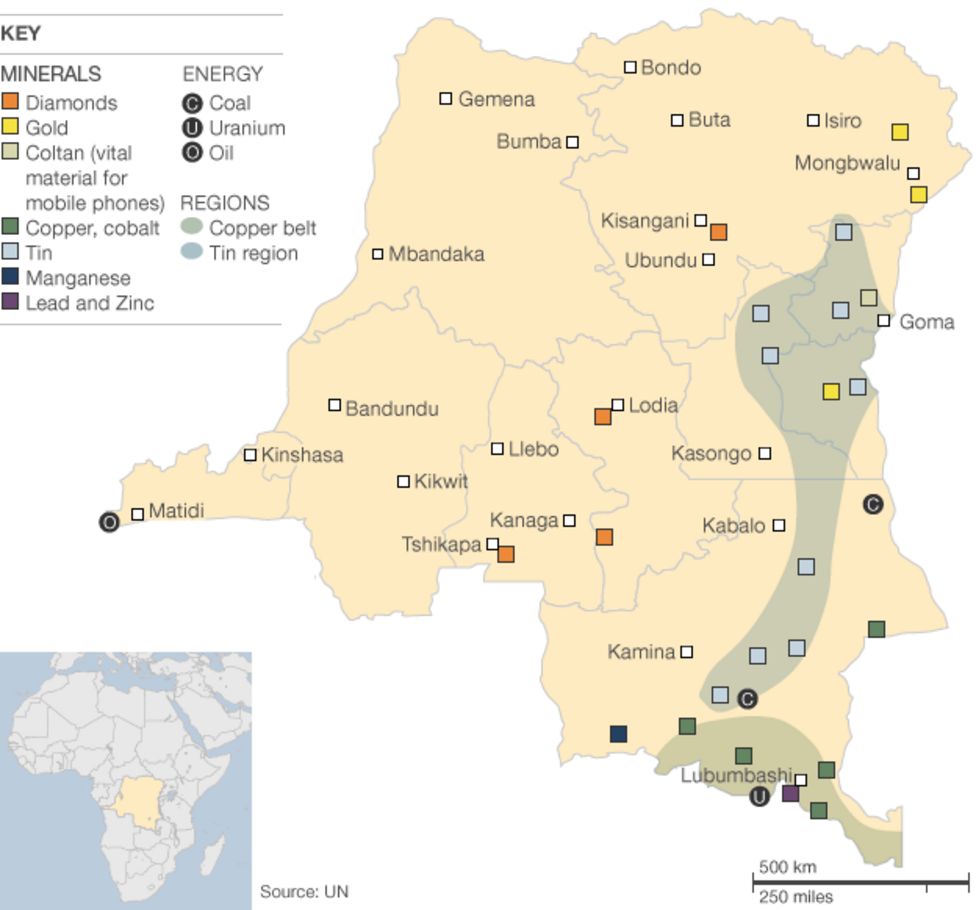
Cobalt, a critical mineral, is a silvery-blue metal that can be magnetized to make particularly powerful magnets.5 This aspect makes cobalt extremely important in the manufacturing of rechargeable batteries, including those found in smartphones, computers, and electric vehicles, and it will also be a pivotal mineral in the future development of clean energy devices and sources.6 The demand for this mineral is already tremendous across the world, and as the need for these electronics increases, so too does the demand for cobalt. The DRC remains the world’s leading producer of cobalt. In 2020, it supplied approximately 67 percent of the global supply.7 The majority of this cobalt comes from a byproduct of copper mining; however the DRC and Morocco are the only two countries where primary cobalt deposits are mined.8 The total mineral wealth in the DRC is estimated in the trillions of dollars, again providing a huge economic opportunity for a country that desperately needs it.9
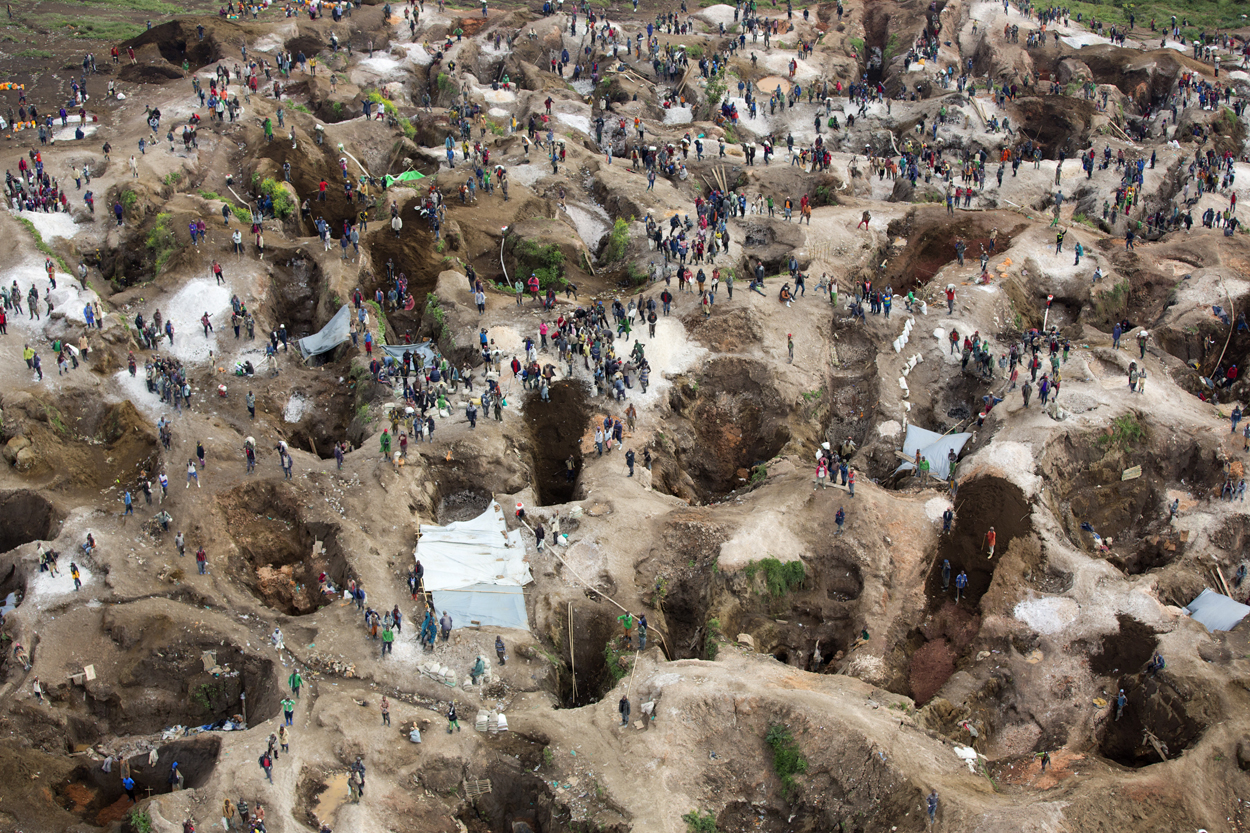
However, the cobalt mining industry in the DRC brings security concerns and serious hazards for the Congolese people. Approximately 15 to 30 percent of the DRC’s cobalt is produced in artisanal and small-scale mines (ASMs), and these mines are rife with human rights abuses throughout their operation.10 In the majority of these mines, workers are not given any basic protective equipment like helmets, gloves, and boots; on the contrary, many often labor barefoot.11 In these unregulated mines, work accidents are frequent and life-threatening. Most accidents and fatalities in these small mines are neither recorded nor reported. However, between September 2014 and December 2015 the DRC’s United Nations-run radio station, Radio Okapi, reported mining accidents resulting in over 80 fatalities in one province.12 The same radio station reported over 250 mining-related deaths in the DRC between June 2015 and June 2020.13 As an example of the sheer magnitude of the problem, following the death of over 40 Congolese cobalt miners after a June 2019 landslide at a Glencore-owned mine in Kolwezi, one miner noted the worst thing he experienced working the mines was seeing, “the sheer number of dead bodies when there were cave-ins.”14 These accidents are a daily occurrences that threaten the lives of the children and adults, of all those working so hard to earn a living. In 2011 in the Kasulo, Kolwezi ASMs, an adult worker named Pierre was considered one of the lucky ones when a tunnel caved in which only broke his leg; he was successfully pulled out of the mine by his coworkers. Pierre was then out of work recovering for the next six months, but he fared better than the thousands of Congolese who were killed working without basic safety conditions and without any protective mining equipment. Pierre returned to the mines following his accident, and as of 2015, he has continued laboring under the same unregulated and life threatening conditions.15 Along with the lack of basic safety materials and dangerous physical structure of the mines, research has shown exposure to cobalt can have short-term and long-term health effects, including causing cancer.16 The risk of long-term illnesses adds another layers of insecurity, of injury, or death for mine workers. Altogether, the labor standards in the DRC’s cobalt mines remain inadequate and leave Congolese workers in peril, in this unforgivingly deadly environment.
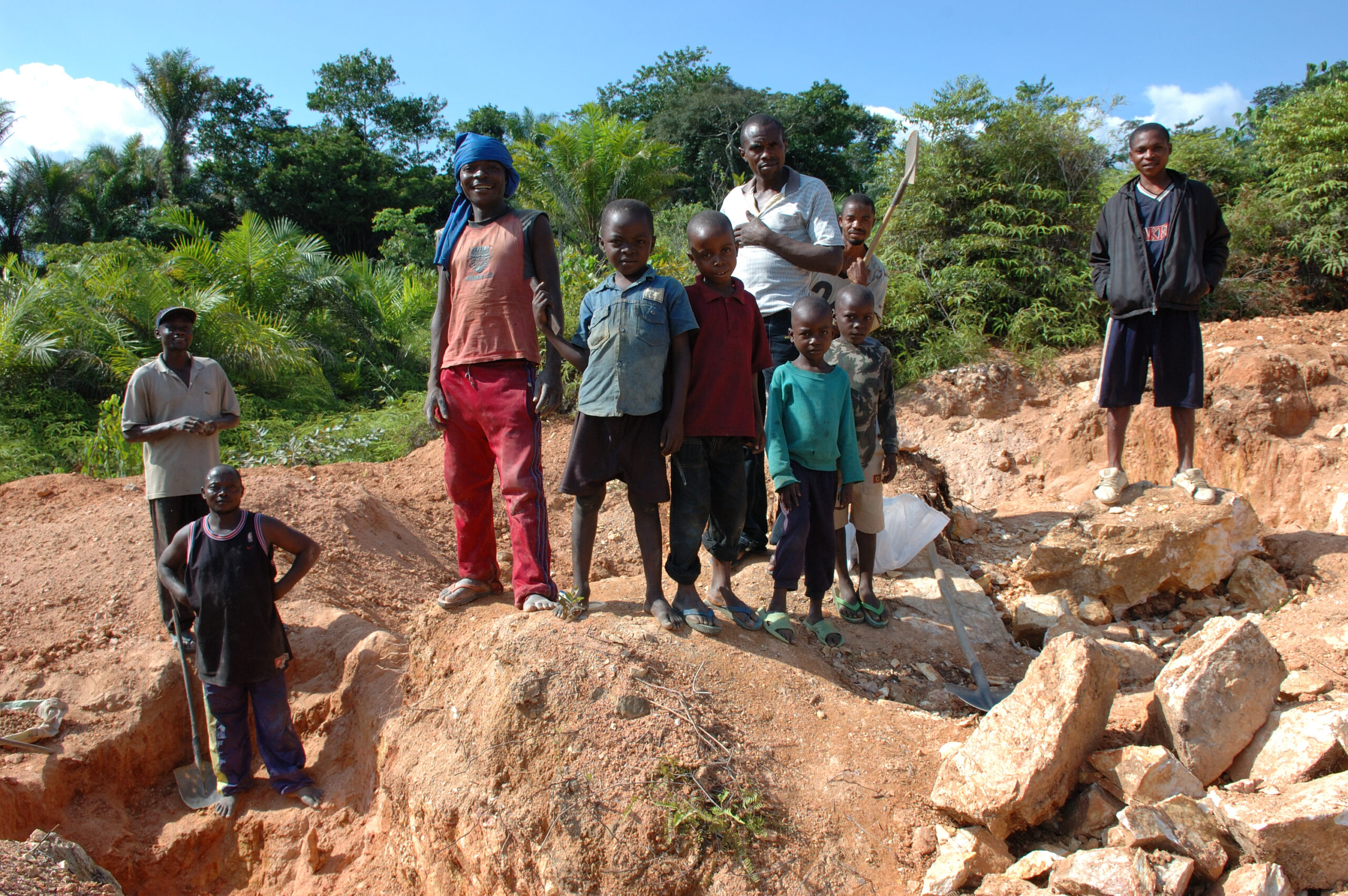
The exploitation of child labor constitutes a very large portion of the DRC cobalt mining industry. Thousands of children work daily in mines in the Copperbelt region, in both large mines and ASMs, and the percentage of children working in mines is highest within ASM locations. The exact number of child miners in the cobalt industry is unknown, but estimates indicate upwards of 35,000 children work daily in cobalt mines in the DRC. These children survive in deplorable and hazardous conditions, akin to slave-like forced child labor. Even if some children willingly work in these mines, it is because they lack any other viable options in the structural confines of their economic environment.17 The children live in debilitating poverty, and they simply lack alternatives to working in the mines to pay for their school fees and food. The DRC provides free primary education for children, however, due to a lack of state funding students are required to pay a monthly fee which most cannot afford. Take the case of a fourteen-year-old Congolese boy named Eddie, who starts work in the Kolwezi cobalt mines at 6 a.m. and works until he goes to school at 9 a.m. Eddie was sent to work in the mines by his parents to pay for his school uniforms and books, and to contribute to his family as a whole.18 Following the death of her father, a nine-year-old Congolese girl, Kabedi, worked in a cobalt ASM for three years until she was twelve. This was her only path to help her mother, by working from morning to night, seven days a week at the expense of her own well-being and education.19 Workers like Pierre, Eddie, and Kabedi brave the hazards of the DRC cobalt mines daily, earning meager amounts of money that barely let them survive.
A major security concern in the DRC mines for any rare minerals or metals comes from the propensity of foreign direct investments in this industry. Investments can spur economic growth that seems to benefit the population in the short-term However, in the long-term this depletes resource rich reserves for a mere fraction of the wealth it represents. Moreover, most profits feed corruption of local and national officials while impoverishing the Congolese population. As of 2021, eight of the fourteen largest cobalt mines in the DRC were Chinese-owned. Switzerland, China, and India owned the five largest mines in the country.20 Many of these foreign mines stem from long-term deals created in the early 2000s, such as a 2007 deal struck between two Chinese companies and former DRC President Joseph Kabila who exchanged a 68 percent stake in a cobalt-and-copper partnership for Chinese promises of investing in the local infrastructure. At the time, this partnership and many others, seemed like a good deal that was mutually beneficial to both parties, but now, and as China has amended the terms of many deals like these to increase payments to Chinese companies while failing to uphold the promised infrastructure development, the DRC has come to recognize national security concerns from foreign majority ownership. Additionally, these deals have enhanced corruption throughout the country, and it is estimated the deals struck with then-President Kabila paid as much as 55 million U.S. dollars to his family while failing to invest in human security aspects of the cobalt mining industry.21 Along with the corruption, historically, many foreign mines utilize output from ASMs, and when they have come under scrutiny for doing so, they have outwardly pledged to avoid utilizing these sources going forward, but failed to fix the larger human security issues present in those mines.22 Foreign buyers often short Congolese cobalt sellers. China controls the majority of the supply chain which gives them the ability to set the purchase price. In recent years, many Congolese have attributed their lower incomes from mining to the increased Chinese buyer activity in the region who depress the price.23 Instead of helping the DRC take advantage of its own resources or addressing the human security problems in the mines, foreign mining companies have benefitted themselves, their corrupt accomplices, and their countries while stomping out the potential of the Congolese people.
Despite the frequently documented human rights abuses and national security concerns with foreign control of the DRC cobalt mines, mining continues and will not be shut down. Many within the cobalt supply chain have tried to refrain from purchasing cobalt from ASMs and poorly regulated mines, however, without their production the supply chain simply cannot meet the demand from its buyers.24 As our world relies more heavily on electronic brains for its cars, cell phones, batteries, and any new technology, the demand for cobalt will increase exponentially in the next few years. Since neither the government of the DRC nor any other international actor cares to reform the cobalt mining industry, how can we better address these human security issues to better protect local citizens, and children, like Eddie, Kabedi, and Pierre?
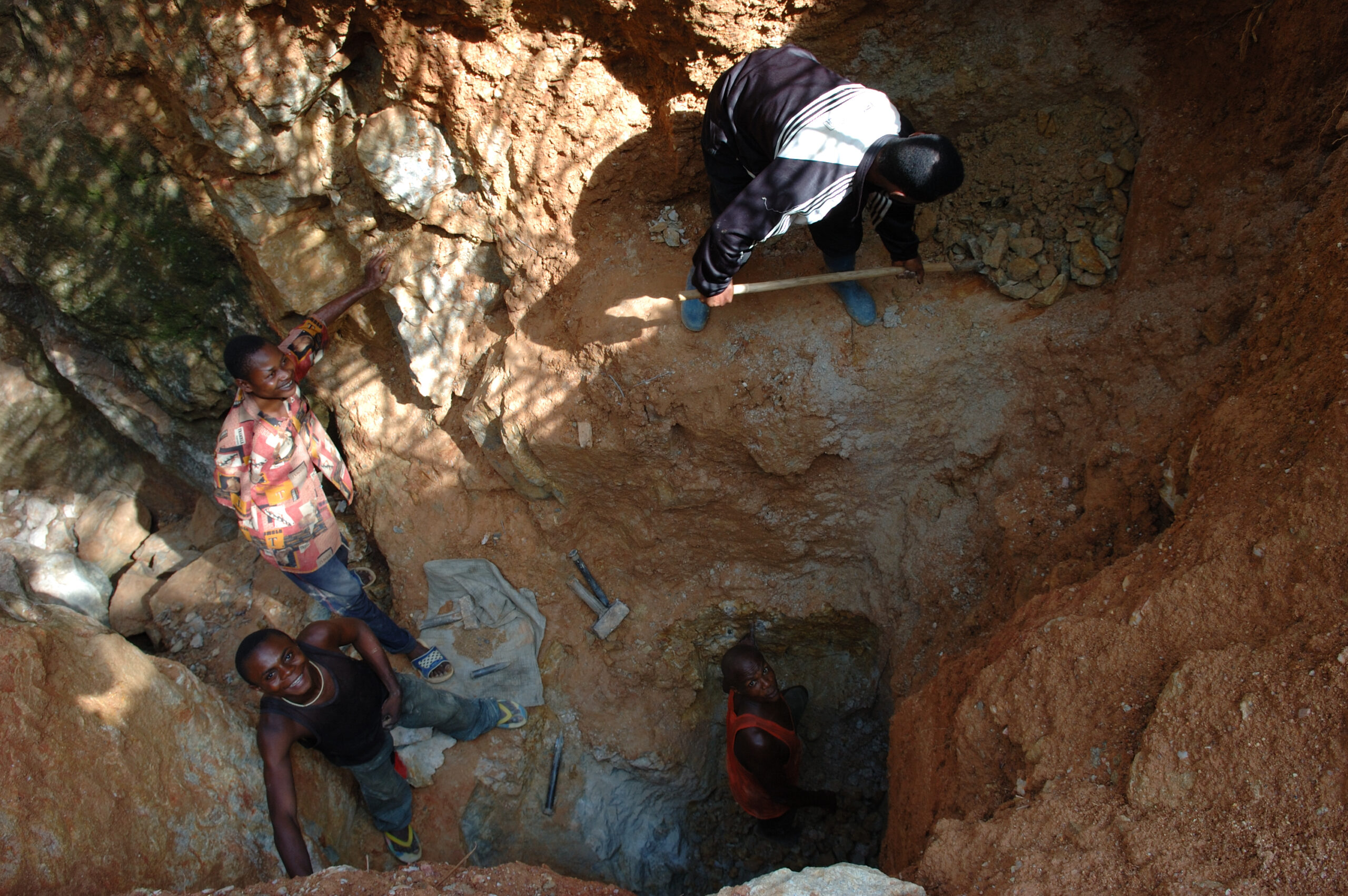
Through a concerted effort between the DRC government, private and public enterprises, and global and rights organizations ASMs must be better supported and regulated. These small mines are not going away as people desperately need the income and the supply chains constantly increase the demand. Rather than ignoring the issue or immediately shutting down a mine, these entities must recognize that the problem will simply move elsewhere until it is equally addressed. These ASMs, and other mines with documented human security concerns, should instead be better formalized via the implementation of site access controls, security equipment, and safety measures. DRC officials must also strive to establish basic labor standards.25 The DRC government and other entities must enable these changes and embrace the ASM environment, if there is any hope of reducing deaths, dismemberment, and illnesses. In 2020, the DRC created a state monopoly that will buy output not produced by industrial operators (i.e. that produced from ASMs), to better regulate the price of the resource.26 This is a good first step towards regulating these mines, but again, additional work focused on human security to regulate and enforce safer conditions in the cobalt mining industry is needed. Along with focusing on regulating these mines, the DRC government must also work to eradicate child labor. To do so, there must be consistent, concerted effort to reduce barriers to education, including removing any and all school fees, providing transportation to school, and decreasing food insecurity so these children can focus on their education rather than work to feed themselves and their families.27 This will take many outside partnerships and assistance. But, improving children’s lives today will ultimately benefit the DRC and its people in the long run.
Finally, the DRC must consider nationalizing foreign companies that overtook the DRC natural resource extraction sector to renegotiate the terms of business. In the last few years, the nation has begun to move in the right direction with some of its recent actions. As an example, in 2018 it changed its mining code to allow for increased taxes on mining firms operating in the country and increased government royalties from the entire industry, despite pushback from foreign mining businesses.28 The DRC must continue exploring changes such as these and work to ensure the foreign companies within the DRC employ local Congolese citizens and pay fair wages while operating in safer working conditions. The DRC government must also increase domestic cobalt production through both state mining avenues and via encouraging new private Congolese cobalt enterprises. This might require the government to seek outside funding from entities like the African Union, the World Bank, or the East African Community it recently joined. Ultimately, reducing and monitoring practices by foreign investors in the cobalt industry may be the only path to protecting Congolese workers in the long run. Together, these actions give the DRC government a pathway forward, even when they cannot yet address every human security issue present in the cobalt mining industry. Confronting daily human rights violations can ultimately give Eddie, Kabedi, and Pierre, and all Congolese people, a better chance at survival and a brighter future.
- The World Bank, “The World Bank in DRC,” The World Bank, last modified March 29, 2023, https://www.worldbank.org/en/country/drc/overview. ↵
- The World Bank, Human Capital Country Brief: Democratic Republic of Congo, report no. HCI-AM22-COD, 1, October 2022, https://www.worldbank.org/en/publication/human-capital#Index. ↵
- Amnesty International, Democratic Republic of Congo: “This Is What We Die For”: Human Rights Abuses in the Democratic Republic of the Congo Power the Global Trade in Cobalt, research report no. AFR 62/3183/2016, 24; 31, January 19, 2016, https://www.amnesty.org/en/documents/afr62/3183/2016/en/; John Ngombua, “From Mine to School,” trans. Sophie Bassi, UNICEF: Democratic Republic of Congo, last modified May 15, 2021, https://www.unicef.org/drcongo/en/stories/mine-school. ↵
- The World Bank, “The World Bank in DRC,” The World Bank, last modified March 29, 2023, https://www.worldbank.org/en/country/drc/overview. ↵
- Royal Society of Chemistry, “Cobalt,” Royal Society of Chemistry, accessed June 25, 2023, https://www.rsc.org/periodic-table/element/27/cobalt. ↵
- Bureau of International Labor Affairs, “Combatting Child Labor in the Democratic Republic of the Congo’s Cobalt Industry (COTECCO),” Bureau of International Labor Affairs, accessed June 25, 2023, The Cobalt Institute, Cobalt: Powering the Green Economy, 1-2, May 2023, https://www.dol.gov/agencies/ilab/combatting-child-labor-democratic-republic-congos-cobalt-industry-cotecco. ↵
- International Organizing Committee for the World Mining Congress, World Mining Data 2022, ed. Christian Reichl and Michael Schatz, report no. 37, 156, April 28, 2022. ↵
- United States Agency for International Development, Mining and the Green Energy Transition, by Terah U. De Jong, Titus Sauerwein, and Ludivine Wouters, 71, November 22, 2021, https://www.land-links.org/document/mining-and-the-green-energy-transition-review-of-international-development-challenges-and-opportunities/. ↵
- U.S. Department of Commerce, “Democratic Republic of the Congo – Country Commercial Guide,” International Trade Administration, last modified December 14, 2022, https://www.trade.gov/country-commercial-guides/democratic-republic-congo-mining-and-minerals. ↵
- World Economic Forum, Making Mining Safe and Fair: Artisanal Cobalt Extraction in the Democratic Republic of the Congo, 3, September 15, 2020, https://www.weforum.org/whitepapers/making-mining-safe-and-fair-artisanal-cobalt-extraction-in-the-democratic-republic-of-the-congo/. ↵
- Dorothée Baumann-Pauly, Cobalt Mining in the Democratic Republic of the Congo: Addressing Root Causes of Human Rights Abuses, 3, February 2023, https://gcbhr.org/insights/2023/02/cobalt-mining-in-the-democratic-republic-of-the-congo-addressing-root-causes-of-human-rights-abuses. ↵
- Amnesty International, Democratic Republic of Congo: “This Is What We Die For”: Human Rights Abuses in the Democratic Republic of the Congo Power the Global Trade in Cobalt, research report no. AFR 62/3183/2016, 6, January 19, 2016, https://www.amnesty.org/en/documents/afr62/3183/2016/en/. ↵
- World Economic Forum, Making Mining Safe and Fair: Artisanal Cobalt Extraction in the Democratic Republic of the Congo, 25, September 15, 2020, https://www.weforum.org/whitepapers/making-mining-safe-and-fair-artisanal-cobalt-extraction-in-the-democratic-republic-of-the-congo/. ↵
- Nicolas Niarchos, “The Dark Side of Congo’s Cobalt Rush,” The New Yorker, last modified May 24, 2021, https://www.newyorker.com/magazine/2021/05/31/the-dark-side-of-congos-cobalt-rush. ↵
- Amnesty International, Democratic Republic of Congo: “This Is What We Die For”: Human Rights Abuses in the Democratic Republic of the Congo Power the Global Trade in Cobalt, research report no. AFR 62/3183/2016, 24, January 19, 2016, https://www.amnesty.org/en/documents/afr62/3183/2016/en/. ↵
- Centers for Disease Control and Prevention, “Cobalt,” The National Institute for Occupational Safety and Health (NIOSH), last modified June 24, 2019, https://www.cdc.gov/niosh/topics/cobalt/. ↵
- Bureau of International Labor Affairs U.S. Department of Labor, 2021 Findings on the Worst Forms of Child Labor, by Bureau of International Labor Affairs, 2, 2021, https://www.dol.gov/agencies/ilab/resources/reports/child-labor/congo-democratic-republic-drc. ↵
- Amnesty International, Democratic Republic of Congo: “This Is What We Die For”: Human Rights Abuses in the Democratic Republic of the Congo Power the Global Trade in Cobalt, research report no. AFR 62/3183/2016, 32, January 19, 2016, https://www.amnesty.org/en/documents/afr62/3183/2016/en/. ↵
- John Ngombua, “From Mine to School,” trans. Sophie Bassi, UNICEF: Democratic Republic of Congo, last modified May 15, 2021, https://www.unicef.org/drcongo/en/stories/mine-school. ↵
- United States Agency for International Development, Mining and the Green Energy Transition, by Terah U. De Jong, Titus Sauerwein, and Ludivine Wouters, 71, November 22, 2021, https://www.land-links.org/document/mining-and-the-green-energy-transition-review-of-international-development-challenges-and-opportunities/. ↵
- Felix K. Chang, “China’s Rare Earth Metals Consolidation and Market,” Foreign Policy Research Institute, last modified March 2, 2022, https://www.fpri.org/article/2022/03/chinas-rare-earth-metals-consolidation-and-market-power/. ↵
- United States Agency for International Development, Mining and the Green Energy Transition, by Terah U. De Jong, Titus Sauerwein, and Ludivine Wouters, 72, November 22, 2021, https://www.land-links.org/document/mining-and-the-green-energy-transition-review-of-international-development-challenges-and-opportunities/. ↵
- Dorothée Baumann-Pauly, Cobalt Mining in the Democratic Republic of the Congo: Addressing Root Causes of Human Rights Abuses, 6, February 2023, https://gcbhr.org/insights/2023/02/cobalt-mining-in-the-democratic-republic-of-the-congo-addressing-root-causes-of-human-rights-abuses. ↵
- Dorothée Baumann-Pauly, Cobalt Mining in the Democratic Republic of the Congo: Addressing Root Causes of Human Rights Abuses, 3, February 2023, https://gcbhr.org/insights/2023/02/cobalt-mining-in-the-democratic-republic-of-the-congo-addressing-root-causes-of-human-rights-abuses. ↵
- World Economic Forum, Making Mining Safe and Fair: Artisanal Cobalt Extraction in the Democratic Republic of the Congo, 4, September 15, 2020, https://www.weforum.org/whitepapers/making-mining-safe-and-fair-artisanal-cobalt-extraction-in-the-democratic-republic-of-the-congo/. ↵
- William Clowes and Michael J. Kavanagh, “DRC Moves to Monopolise about 25 Percent of All Cobalt Exports,” Aljazeera, last modified January 30, 2020, https://www.aljazeera.com/economy/2020/1/30/drc-moves-to-monopolise-about-25-percent-of-all-cobalt-exports. ↵
- Amnesty International, Democratic Republic of Congo: “This Is What We Die For”: Human Rights Abuses in the Democratic Republic of the Congo Power the Global Trade in Cobalt, research report no. AFR 62/3183/2016, 67, January 19, 2016, https://www.amnesty.org/en/documents/afr62/3183/2016/en/. ↵
- BBC, “DR Congo Signs New Mining Law despite Companies’ Opposition,” BBC News, last modified March 10, 2018, https://www.bbc.com/news/world-africa-43355678. ↵
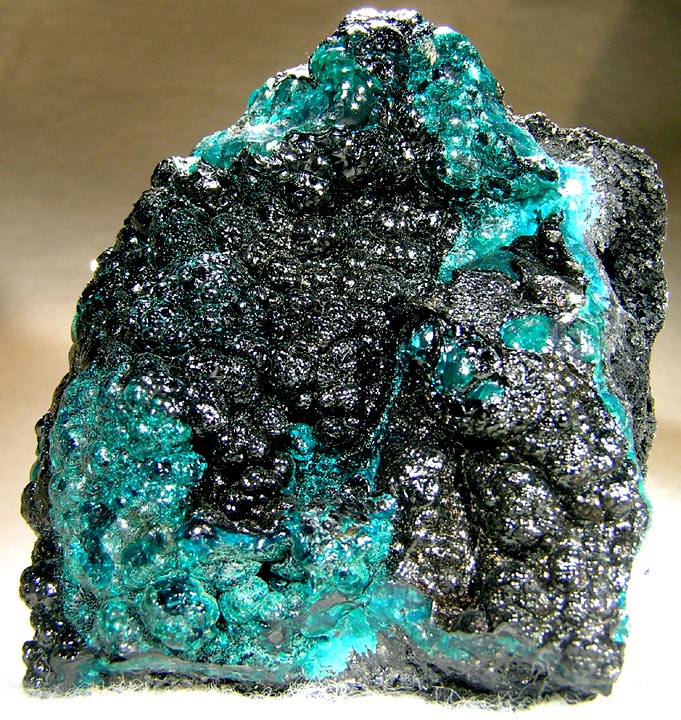
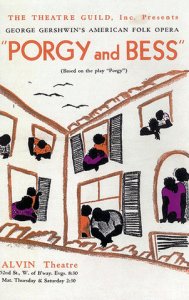

18 comments
Maria Fernanda Guerrero
This article highlights the true colors of child labor and its drastic inhumane working conditions for workers. There is no adequate protective gear that is required to wear while working in mines. Not only are these workers risking their lives but these are children. Children that are meant to be children. They are meant to run around and play not be put in dangerous environments to work in life threatening situations. We must take action against child labor. Thank you for writing this article towards the advocacy against it.
Madison Hinojosa
Indeed, the issue of child labor and various forms of abuse is a pressing concern that demands our attention and action. It is crucial to shine a light on these larger issues that often go unnoticed or neglected. By bringing awareness to the widespread problem of child labor and the numerous abuses that exist, we can work towards creating a more just and equitable society.
A'marie Pollard
Reflecting on the situation in the cobalt mines of the Democratic Republic of Congo (DRC), it’s clear that urgent action is needed to address the severe human rights abuses and safety hazards faced by Congolese workers. The conditions in these mines are unacceptable, with workers lacking basic protective equipment and facing frequent accidents and fatalities. It’s imperative that we advocate for improved labor standards and ensure the safety and well-being of all individuals working in these mines. Lately, I have seen Tik Tok about this same issue. It showed kids been used and sold in plastic bags forced to work in harsh conditions.
Carina Martinez
This article was very interesting to me because I have been hearing about this issue on social media. I will say that this article provided much more detail than any of the posts I’ve seen online. It is so disappointing to see the measures big corporations would go to for their profit. I would’ve never known how many lives are at risk and how many lives have been lost if it were not for this article. Well done!
Nicole Estrada
Your appreciation of shining light on Congo’s horrors and exploitation of its cobalt miners is much appreciated. Regulations to prevent abuse and eradicate child labor are critical for justice. Advocating for international cooperation and supporting human rights initiatives are critical milestones. By reevaluating investments, we can build a more equal industry. Your participation in this topic is critical to promoting good change and a brighter future for everyone concerned. I appreciate your article very much as someone who does not know much about this issue! Great work!
Fernando Milian
This is a very informative article that serves as a great example of how bad the situation can turn when the government and its institutions are not efficient. Based on the text, I believe that the government’s responsibility in this situation is substantial due to its inability (or unwillingness) to enforce labor standards. As the articles mention, the government of this country is focused on short-term economic gains, and it is not investing in critical sectors like education. A situation like this one demonstrates a mediocre government incapable of fulfilling its duty to protect and improve the lives of its people. What strikes me the most about all this is what international organizations are doing to improve this situation. Someone knows?
Carlos Alonzo
Good evening, Makenzie, I thought that your article was informative. It’s saddening that citizens in the Democratic Republic of the Congo (DRC) are not given the human rights that so many others have access to. I am reminded of the quote by Martin Luther King Jr., which describes how such injustices in the DRC can be a threat to justice everywhere if the proper regulations are not in place.
Vianna Villarreal
This is a very important to talk about to raise awareness for, there are numerous third world countries today that the world fails to acknowledge. In a different sense at times we do not fail to acknowledge it rather we fail to do anything to create change for it. The most heartbreaking thing is that we are born into a completely different world than these other humans, we are guaranteed and education and access to health care. There is never any guarantee or opportunity for these children and families to have the finer things life has to offer.
Jonathan Flores
This article is extremely well written to say the least. This article finds its strength in its ability to shed light on a topic not many people even realize is a problem, and show the dark reality of the topic. While this article deals with cell phones, I find a personal connection to this in the ongoing debate of electric cars. An argument against electric cars is the huge amount of pollution and labor it takes to mine the lithium needed for the batteries in this car. In this way, the article seems very in touch and is a job well done.
Lauren Sahadi
This was a very informative article. I never knew what has been going on with the human rights abuses, child labor, unsafe working conditions, and so much more. I think that issues like these need to be showcased more to put out into the world what some people are doing and violating our rights as humans. Very powerful piece, great job.